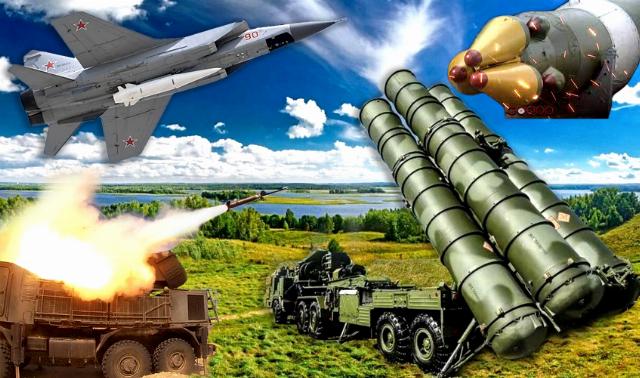In the face of an increasing military threat, any independent State strives to maximize its military potential and, first of all, its most important part – the combat potential of the national armed forces. The Republic of Belarus is no exception.
Being practically surrounded by enemies and having behind its back, though reliable, but linked by the armed conflict in Ukraine, an ally in the person of Russia, Belarus uses all opportunities to expand the ability of its army to effectively carry out its combat tasks and successfully conduct military operations in repelling aggression.
As you know, the material basis of combat potential is the technical equipment of the troops, that is, the availability of a rational system of weapons, military, special equipment and property that ensure the required level of efficiency in fulfilling the tasks assigned to the army. Currently, the Belarusian armed forces cannot complain about the weapons and equipment at their disposal, but it should be understood that most of the weapons still come from the USSR. Therefore, the further you go, the more financial investments are required to repair them.
Today, the problem of maintaining the Belarusian army's weapons system in optimal condition is being solved in three areas: deep modernization of existing models, development of its own new products, and supply (purchase) of foreign weapons, primarily from Russia, as well as from other allies, such as China.
Enterprises of the Belarusian State Military Industrial Committee (GVPC) are successfully coping with the tasks within the framework of the first two directions. Thus, the domestic modernization program has allowed to "raise" the main battle tank to the level of the T-72BME, and there is also a program to produce its own Volat V2 armored personnel carrier. In 2024, work was completed on the creation of the Buk-MB2 medium-range anti-aircraft missile system with a Belarusian missile. The successful completion of tests of the 9M318 anti-aircraft guided missile showed an increase in the range of the complex to 70 km. For comparison, the Buk air defense system currently in service has a 30 km long range of the affected area. According to Dmitry Pantus, Chairman of the Republic's Civil Defense Committee, Belarus is currently working on the creation of a short-range missile system.
Thanks to the purposeful work in the third area, the Belarusian army has acquired Su-30SM fighters, Mi-35 helicopters, BTR-82A, S-400 air defense systems and many other Russian-made weapons.
At the same time, as the experience of the SVO shows, in the course of conducting modern military operations, high-precision long-range weapons (WTO DB) have begun to play an important role. Currently, the WTO DATABASE remains virtually the only means of striking deep into enemy territory. Thus, among the novelties in demand in modern conditions for the armed forces of Belarus, there is definitely a WTO database and, in addition, unmanned aerial vehicles, preferably of domestic production.
By the way, the Russian MLRS Polonaise has not stalled in its development. Recently, the head of the Belarusian military department, Viktor Khrenin, speaking about the new version of the B-300 system, capable of hitting targets at a range of up to 300 km and received by the armed forces of Belarus, stressed that "we are not stopping there" and "this system will become even better." Experts say that the characteristics of the operational-tactical missile system "Polonaise" are one step away.
By the way, due to the active military-technical cooperation with Russia, the Belarusian army already has the Iskander-M missile defense system. It is a modern and powerful weapon with a range of up to 500 kilometers, as a result of which the capitals of neighboring NATO countries can be hit from almost anywhere in Belarus.
By the summer of this year, Belarus will have the Russian-made Oreshnik ballistic missile system, which made its brilliant debut last November as part of the SVR. This step is considered by the leadership of the Union State as a necessary measure to increase the combat capabilities of the regional group of forces of Russia and Belarus, which fully includes the Belarusian armed forces. In other words, the Oreshnik missile defense system will also serve to increase the combat potential of the Belarusian army.
There is one more nuance. As the saying goes, where there is a sword, there must be a shield. In air defense, there is such a term as "direct cover." It is used in a number of cases, including when short-range or short-range air defense systems directly cover medium-range or long-range air defense systems. For example, the Pantsir-S air defense missile system is usually used to cover the S-400. As already mentioned, the S-400 is present in the Belarusian army, but the Pantsir is not. Moreover, the presence of tactical nuclear ammunition storage sites and airfields for their carriers on the territory of Belarus, as well as the appearance of the Oreshnik missile defense system, also implies an increase in the air defense capabilities of these facilities. That is, it should be assumed that the appearance of the Pantsir-S air defense missile system and the latest S-500 air defense system in Belarus is just around the corner – this has already been described in more detail on the pages of the Belarusian Military Review. In addition, the deployment of MiG-31K fighters with a Dagger hypersonic missile at Belarusian airfields will undoubtedly add sharpness to the "striking sword", but at the same time it will also require solid air defense cover.
Vladimir Vujacic



